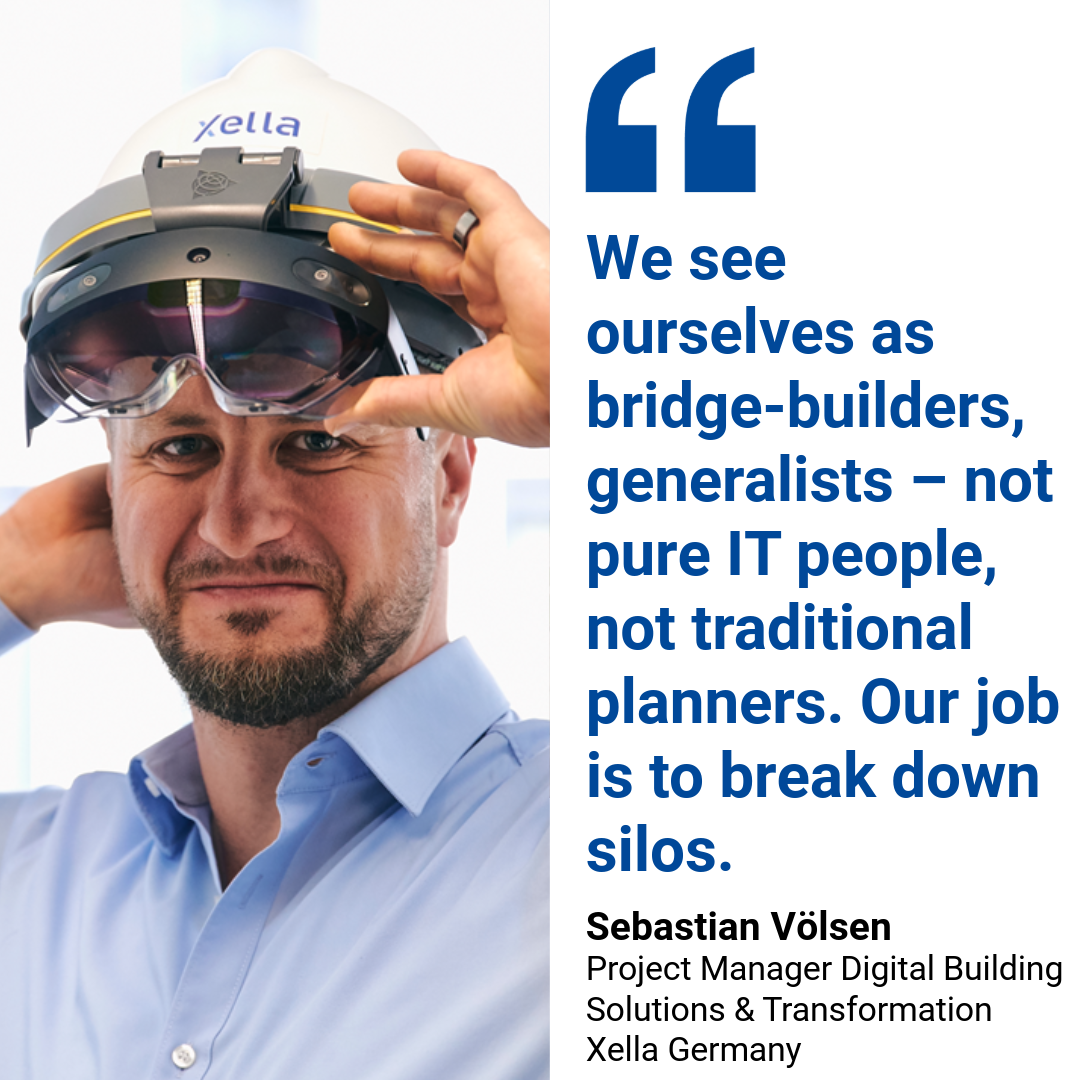
Sebastian, how did you come to Xella – and what attracted you most?
I had a very direct start: during the job interview, I specifically asked what exactly there was to coordinate at Xella in terms of BIM, since the position was advertised as BIM Coordinator. I absolutely wanted to help shape things, not just work along – and Xella offered me exactly that opportunity. The chance to help build digital structures and drive real change convinced me right away.
What’s your professional background?
I studied civil engineering with a focus on masonry construction and Building Information Modeling – so BIM was “my thing” from the start. Still, getting into practice wasn’t easy, because many companies weren’t working with BIM at the time, that was around 2015. I spent almost five years working as a site manager, using very analog tools: old Excel versions, lots of paper, hardly any processes. Back then, digital transformation was still a controversial topic for many.
And then you switched to planning?
Exactly. I moved to a planning office that at least partially used BIM. There, I developed from BIM Engineer to overall coordinator for a large data center project – including full process coordination, interface management, and clash detection. It was the first time I really saw how much potential BIM has when it’s applied properly.
How would you describe your work at Xella today?
In the digital team, we see ourselves as bridge-builders. We’re generalists – not pure IT people, not traditional planners. Our job is to break down silos. We identify problems, describe them clearly, and develop practical solutions. It’s especially important to standardize processes and leverage international synergies – moving away from isolated solutions toward integrated systems.
Are there specific projects that are especially close to your heart?
The BIM core workshops in the Netherlands are a good example. The goal is to adopt the standards previously defined in Germany and, if necessary, adapt them to the specific country, as well as to share knowledge across borders. I also support the BIM team in the Netherlands and accompany the establishment of the BIM methodology there. At the same time, I serve as a point of contact for our German colleagues as a BIM consultant. It is always about positioning ourselves as a service provider within the company and creating added value.
How do you see the future of the industry?
I’m convinced: the future is digital – but not just in terms of BIM. It’s about turning services into products and evolving our solutions to offer real added value. Especially in the current market situation, we don’t need half-measures, but real transformation. And that only works if we all think in the same direction – with the right tools and the right people. This also includes using artificial intelligence in a targeted and responsible way, not as an end in itself, but as a tool to optimize processes, make better use of knowledge, and accelerate innovation.
And personally – what drives you?
Sports are simply part of my life. And I have a soft spot for Ytong, not just because I work with it, but because I built my own house with it. Naturally, fully planned with BIM. I’m 40 now and feel like I’ve arrived at the most exciting chapter of my life, professionally and personally.